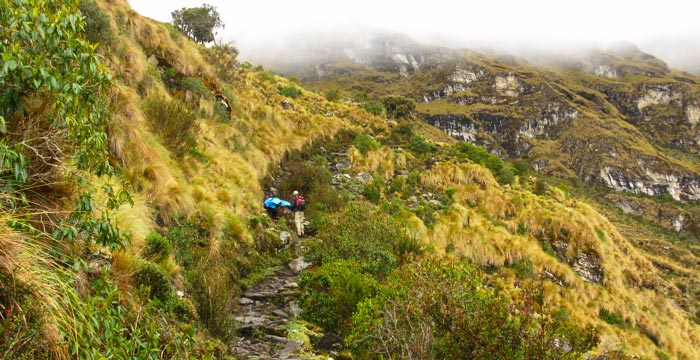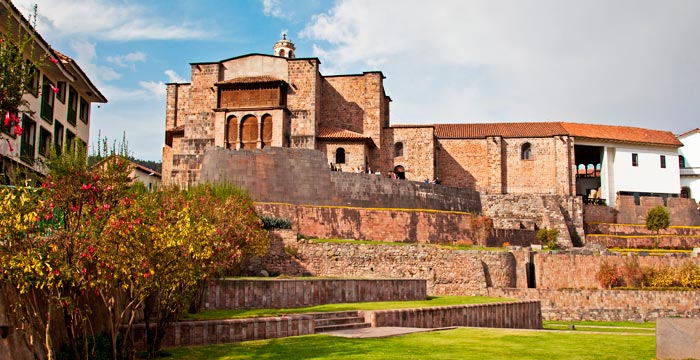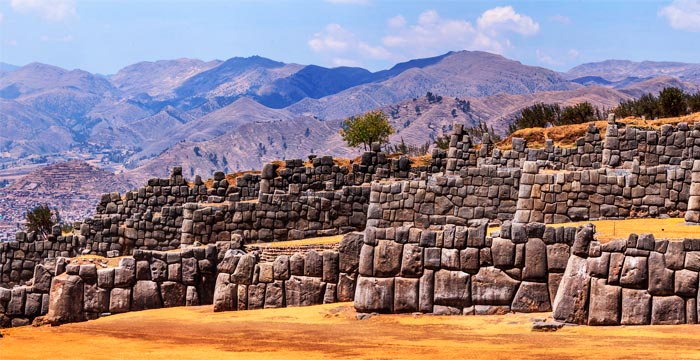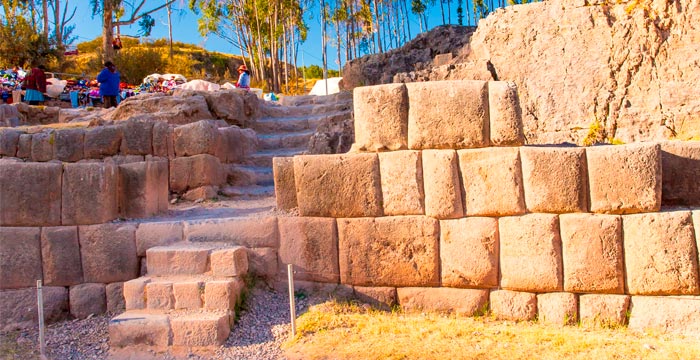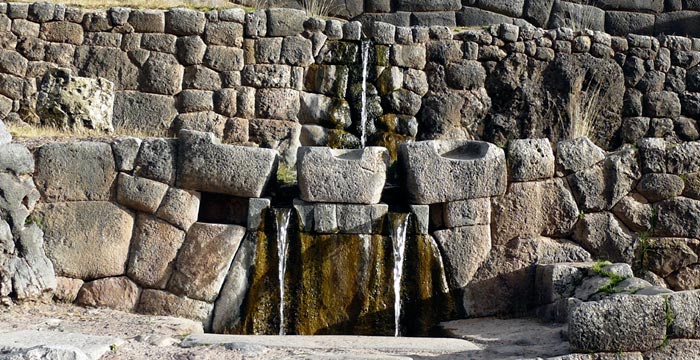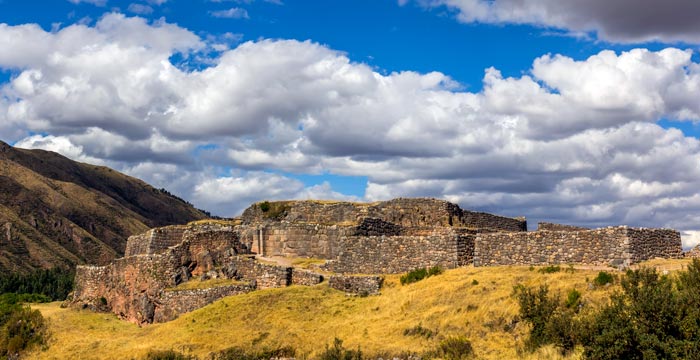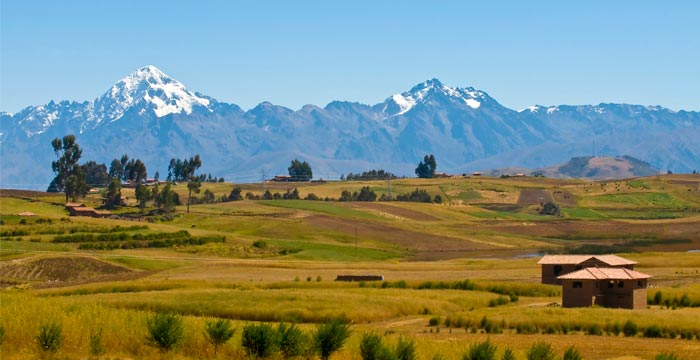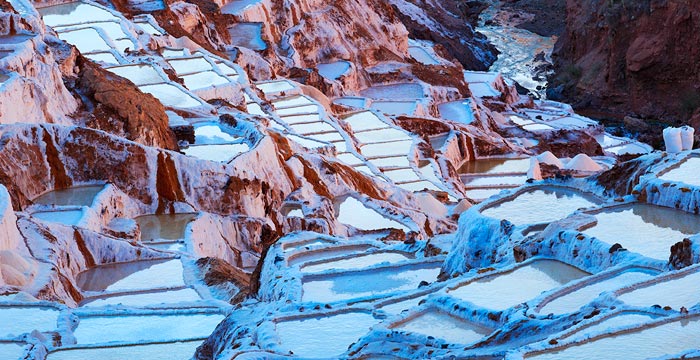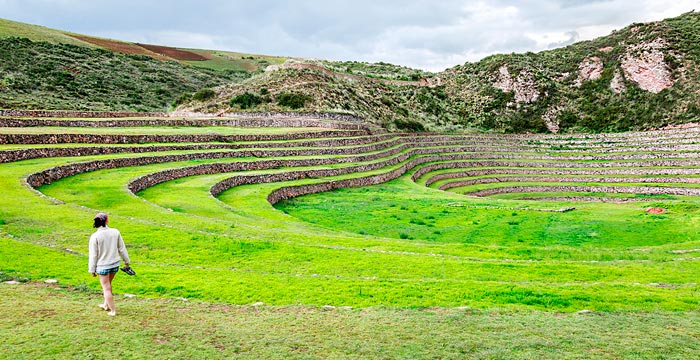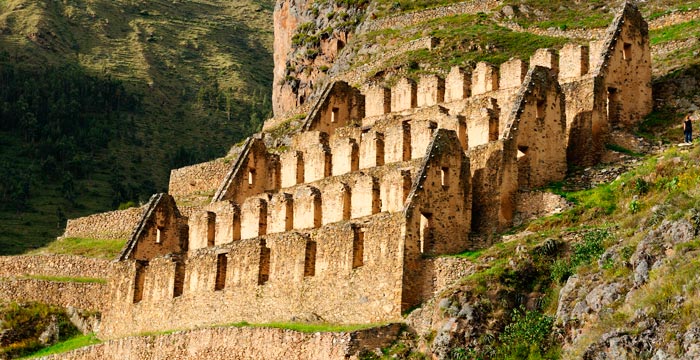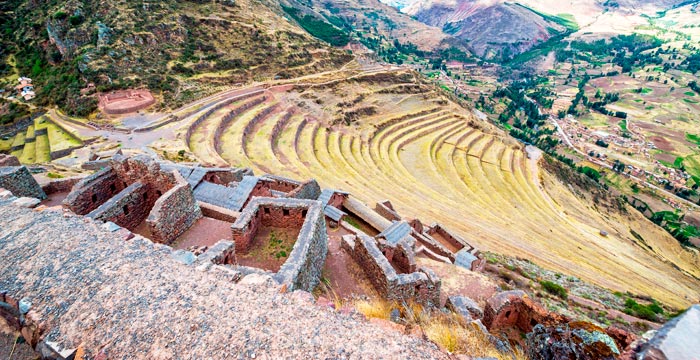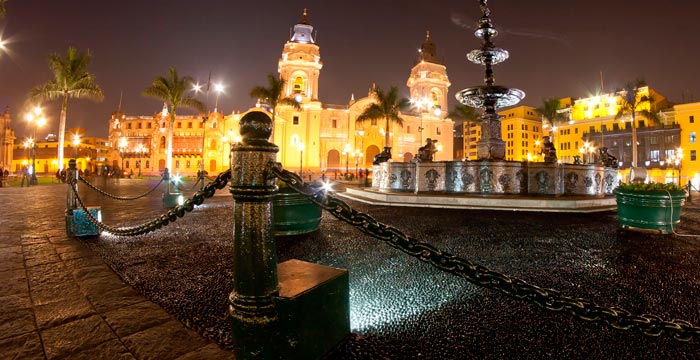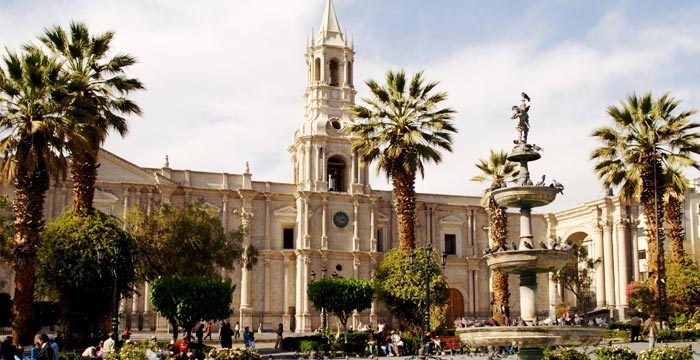Inca & Colonial Peru
On your exclusive private tour of Peru, you’ll wander ancient Inca archaeological remains and admire city centers bearing the unmistakable mark of Peru’s colonial past. Your custom Peru tour can include a combination of pre-Inca and post-Inca history through the stunning lens of the impressive architecture both left behind. Take note culture enthusiasts!
Choquequirao Archaeological Park
This archaeological site is often described as a “mini Machu Picchu,” and indeed, it has a lot in common with its world-famous sister site. There is an equally fascinating array of Inca constructions and agricultural terraces here and the site enjoys a similarly jaw-dropping setting high up on a lofty Andean ledge. The main difference between it and Machu Picchu is the lack of crowds. If you want to go here during your private tour of Peru, the most popular way to get to the site is via a four-day hike through the beautiful Apurimac Valley. Hard-core hikers can, after completing this trek, link up with the Inca Trail for a 9-day trekking adventure that culminates at Machu Picchu.
Qorikancha Temple
Where better to explore Inca history that at the site of what was surely one of their most lavish constructions? Evidence suggests that Qorikancha in Cusco was once an extraordinarily lavish temple dripping in gold and treasures, built by the Incas to pay homage to the revered Sun God during sun-worshipping ceremonies. When the Spanish arrived, the temple was stripped of its gold and demolished with a cathedral erected over the impeccably constructed Inca foundations. A true Incan and Spanish hybrid, Qorikancha now reflects the dual character of the city of Cusco, which fuses elements from both indigenous and European culture. Come here during your private tour of Peru to see how the great civilizations of the past still live on in Cusco.
Sacsayhuamán Archaeological Park
This immense Inca site, located just 1.2 miles from the center of Cusco, never fails to make an impact on those who visit. Spread across a truly vast area of 7,643 acres are magnificent constructions – most notably a multi-tiered zigzag fortification made using mighty boulders, some of which are believed to weigh a whopping 300 tons. In typical Inca style, the stones are fit together skillfully with no room to slip through as much as a piece of paper between the gaps. What exactly the site was used for is still up for speculation, though experts think it probably had both military and ceremonial purposes. Kuoda can arrange for you to take a private tour of Sacsayhuamán with an expert guide. While the park may feel expansive, it’s worth remembering that only 20 percent of the original construction remains here, with the other 80 percent having been plundered by the Spanish for their building projects in Cusco.
Q`enko Archaeological Ruins
Just outside of Cusco, this ceremonial site remains – like many of the surviving Inca vestiges – shrouded in mystery. Carved into an enormous limestone rock are subterranean rooms and the forms of a puma, condor and llama, as well as a zig-zag canal-like crevice carved into the rock. Some believe it was used to channel chicha (corn beer); another altogether more grisly hypothesis is that it carried blood.
Tambomachay Archaeological Ruins
Inca ceremonial sites and military constructions tend to court the most attention from history buffs vacationing in Peru, but finding out more about the everyday life of the Incas can be equally captivating. Tambomachay, just 5 miles from Cusco, was dubbed “El Baño de los Incas” (Bath of the Incas) by the conquering Spanish. Some historians speculate that it was a kind of spa site for the Inca elite, others think it may have been a military guardhouse. Explore the impressively constructed aqueducts, canals and baths for yourself and conjure up your own theory as to what exactly went on here.
Puka Pukara Archaeological Ruins
Everyone’s heard of Machu Picchu. Puka Pukara? Not so much. But popularity isn’t everything and travelers with an interest in history will no doubt find this archaeological site enthralling. Located on the road between Cusco and the Sacred Valley, Puka Pukara is thought to have been used as a guard post so the Incas could monitor traffic coming to and from Cusco. The storerooms and residential chambers on the site have also caused some to speculate that this location also functioned as a hunting lodge.
Chinchero Archaeological Ruins
The Incas had a rather romantic name for this high-altitude hamlet, calling it the “Birth Place of the Rainbows.” And indeed, its picturesque position up among the snow-dusted Andean mountains can make you feel like you are on level with the clouds. Inca leader Tupac Yupanqui chose this location as his personal retreat, building his very own spiritual sanctuary here. Only eagle-eyed travelers will spot the few remaining signs of the Inca’s presence in Chincheros, namely the agricultural terraces and one massive Inca wall, but all will be struck by the town’s beauty. A lovely colonial church and a typical Andean market help make it a worthy addition to a customized tour of Peru.
Salt Pans of Maras
Located about 25 miles from Cusco, the salt ponds (known as “salineras”) at the small Andean town of Maras have been harvested by local families for centuries. Hundreds of terraced evaporation ponds fed by an underground saltwater stream cover the hillside, creating an eye-catching honeycomb effect. The ponds are all still community owned, with local families taking responsibility over their particular ponds. The Maras salt pans are right beside the archaeological site at Moray so it’s worth combining a trip to both Maras and Moray while you’re in the area.
Moray Archaeological Complex
This ancient agricultural lab was where the Incas experimented with growing crops at different altitudes and climates. This complex, which consists of a series of stepped circular terraces each with their own microclimate, would have allowed them to test what crops would grow and where – and how they could manipulate the land and the crops to increase their output. Moray, which is located in the Sacred Valley not far from Cusco, is a fascinating reminder of just how advanced and ingenious the Inca people were. If you want to visit Moray as part of your personalized tour of Peru, it’s worth combining that with a trip to the Maras salt pans, as the two sites are just a stone’s throw from each other.
Ollantaytambo Archaeological Ruins & Village
When the Spanish arrived in Peru, they quickly set about destroying all aspects of Inca culture, tearing down temples and replacing their centers with European-style settlements. Because of this, very little original Inca street planning remains. Ollantaytambo, however, still has its original Inca walls, street grids, street-level water channels and even some Inca houses. It’s one of the few places in Peru that can give travelers a good sense of what an Inca village would have looked like. Above the town are steep, sweeping stone terraces, from where the Incas would have shot arrows and spears out at the invading Spanish, and the remnants of an Inca temple and fortress. Kuoda can arrange a private tour of the town, terraces and fortress. Ollantaytambo also marks the start line of the Inca Trail.
Pisac Archaeological Ruins & Village
The peaceful Urubamba Valley town of Pisac is famous for two things: its market and its spectacular hilltop ruins. There’s a market here daily with everything from textiles and clothing to ceramics and musical instruments on offer, though it’s at its largest on Sunday when food-sellers join the craft vendors in town. Above the town itself, set precariously on a sacred hill, are the old Inca ruins of plazas, temples, pools and other finely crafted constructions. Historians believe this complex was probably built here to watch over the southern entrance of the Sacred Valley. With the Andean peaks rearing up in the background, it’s quite a sight to behold.
Historic City Center of Lima
There was a time when travelers to Peru made just a brief stop-off in the capital before hightailing it to Cusco and the Sacred Valley. Now, however, people are beginning to understand the under-the-radar appeal of the “City of Kings,” which has been subject to regeneration and restoration. Chief among the colonial glories of Lima is the historic center, which was founded by Spanish conquistador Francisco Pizarro in January, 1535. The process of urbanization started by Pizarro saw the city fast develop into the most important Spanish center in all of South America. Many of the colonial constructions of the 16th and 17th centuries remain standing in the city’s core, still there for all to see. The main square, Plaza de Armas, can boast of perhaps the finest collection of colonial buildings, with the Cathedral of Lima, the Sagrario Chapel and the Archbishop’s Palace, all located there. The more macabre bone-and-skull displays of the San Francisco Convent also draws in many tourists.
Historic City Center of Arequipa
Peru’s second-largest city is a real beauty; its colonial churches, museums and homes are almost all constructed out of while sillar volcanic stone, hence its nickname, “the White City.” Bright, shimmering and serene, the historic core of town is characterized by a mix of indigenous and European-style architectural elements. The style has been dubbed “Escuela Arequipeña” and can be seen around Plaza de Armas, at the Cathedral, the San Francisco Church and the Santa Catalina Monastery. For travelers with an interest in Peru’s pre-colonial past, the San Agustin University’s Archaeological Museum is a must, with an extensive collection of pre-Hispanic textiles, mummies, stonework and metalwork.

